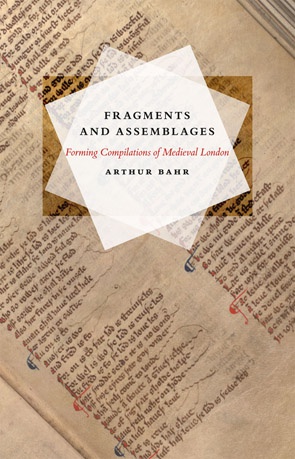Reasearch Portfolio | Literature
How are modern and Medieval readers alike?
The strangely familiar browsing habits of Medieval readers
While reading online, do you sometimes find yourself going from reading articles on, say, politics, to poetry, to humor? If so, your experience is rather medieval says MIT literary scholar Arthur Bahr.
In his first book, Fragments and Assemblages: Forming Compilations of Medieval London, Bahr deduces that medieval readers browsed thorough texts on many topics — very much as we often do today when browsing social media or favorite websites. That's because medieval manuscripts stitched together wildly disparate documents, from poems to legal treatises.
“This is why medieval literature is so interesting at our particular historical moment,” he says. “The Internet has made it easy, normal even, to read in all sorts of nonlinear ways, but the evidence of medieval compilations suggests that people were already doing that many centuries ago."
Each medieval manuscript is a unique constellation of different ideas, authors, agents, and historical vectors — a book form that makes “room for interesting interplay between different kinds of reading experiences within the same physical object,” Bahr says.
“My next book is very much going to be an invitation to readers,” says Bahr, the Alfred Henry and Jean Morrison Hayes Career Development Associate Professor of Literature. “I’m offering ways of reading the poems, [“Pearl” and “Sir Gawain and the Green Knight,”] rather than the definitive readings of them.”
”The best compliment I can get is that my own work inspired someone to read the original work.”
Story at MIT News
Profile at MIT News
Morte d'Athur and the Engineer

Photocredit: Bryce Vickmark
Arthur Bahr | website
MIT Literature
Videos
Why study Medieval literature at MIT?
(For one thing —time travel)
How are Medieval manuscripts like snowflakes?

At a fashion-industry dinner in New York recently, a reporter asked various notables what books they were reading. Designer Vera Wang had a distinctive choice: Fragments and Assemblages, Arthur Bahr's book about reading practices in 14th-century London.
Archives
MIT SHASS News: Medievalists on the art of being interdisciplinary
"The intellectual version of the slow food movement.”
Cruising in the Ruins: disciplinarity in the post/medieval university
Papers from the 2012 Babel Conference
The New Chaucer Society | social media page